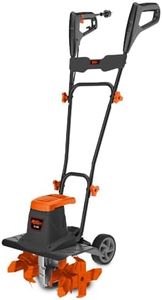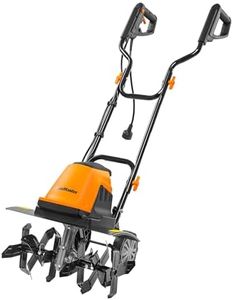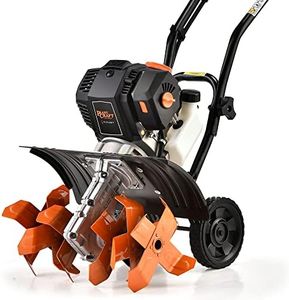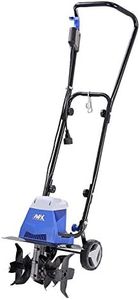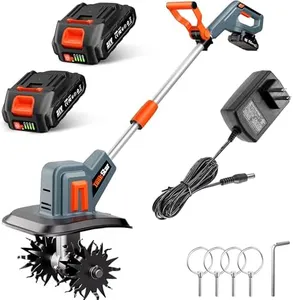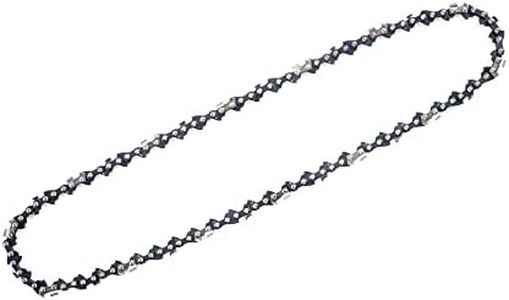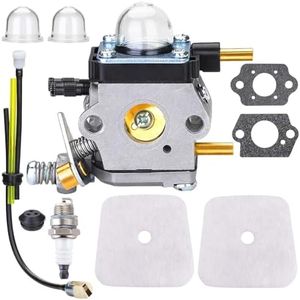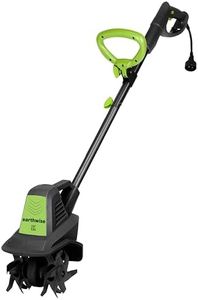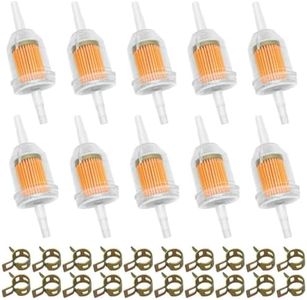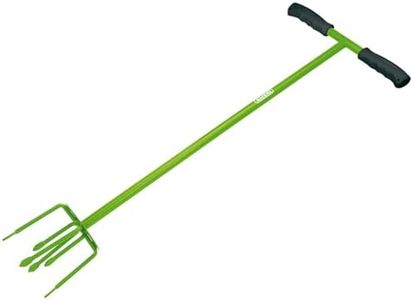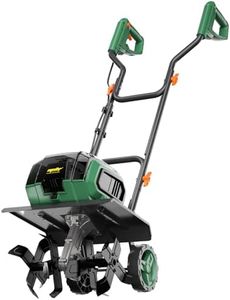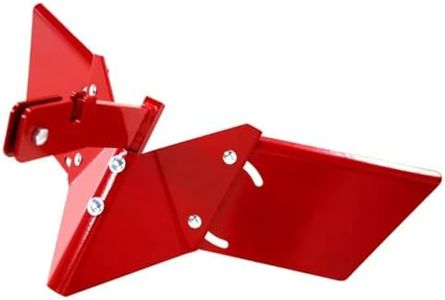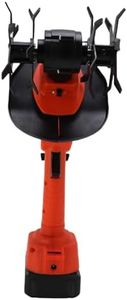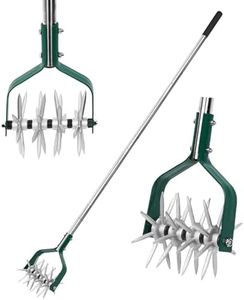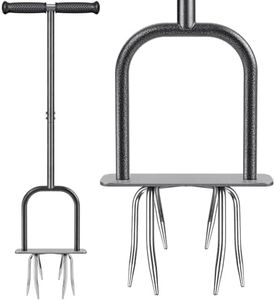We Use CookiesWe use cookies to enhance the security, performance,
functionality and for analytical and promotional activities. By continuing to browse this site you
are agreeing to our privacy policy
10 Best Small Tillers
From leading brands and best sellers available on the web.Buying Guide for the Best Small Tillers
When shopping for a small tiller, it's crucial to find one that matches the size of your garden and the type of soil you'll be working with. A small tiller can help you prepare the ground for planting, mix in compost, and keep weeds under control. The right model should feel comfortable and manageable for you, while also being powerful enough for the tasks you have in mind. Before making a decision, think about how often you’ll use the tiller, the conditions in your yard, and your physical ability to handle the machine safely.Tilling WidthTilling width refers to the area the tiller covers in one pass. This is important because a wider tilling width allows you to cover more ground quickly, which is helpful for larger plots. Small tillers often have widths ranging from about 6 to 16 inches. Narrow widths (up to 10 inches) are good for tight spaces, flowerbeds, or between rows. Medium widths (10-14 inches) work well for most garden beds. Wider models (above 14 inches) can be more efficient for open areas but may be harder to maneuver. Your choice here should depend on the size of the spaces you plan to till and how much agility you require.
Tilling DepthTilling depth is how deep the tiller can dig into the soil in one pass. This matters because different plants require different root depths, and compacted soils need deeper tilling. Depth settings for small tillers are usually between 2 and 8 inches. Shallow depths (2-4 inches) are ideal for weeding and mixing in fertilizer or compost. Moderate depths (4-6 inches) suit most general gardening tasks. Maximum depths (6-8 inches) are best for breaking new ground or preparing for deep-rooted vegetables. Choose a tiller with a depth that matches your gardening needs—go deeper for new or heavy soil, shallower for maintenance.
Power SourceSmall tillers come in electric (corded or battery-powered) and gas-powered options. The power source affects noise, emissions, ease of use, and maintenance. Electric tillers are quieter, lighter, easier to start, and suitable if you have a nearby power source or a small garden. Battery-powered models offer portability without a cord but run limited by battery life. Gas models deliver more power and runtime, making them better for tougher soils but require fueling and more maintenance. Think about your comfort with starting engines, the size of your area, and whether noise or emissions are a concern to help decide.
WeightA tiller’s weight influences how easy it is to lift, push, or turn. Lightweight tillers (under 25 pounds) are ideal for raised beds, small spaces, or users who prefer a tool they can easily move or store. Medium-weight tillers (25-35 pounds) balance maneuverability with more effectiveness on tougher soil. Heavier tillers (above 35 pounds) provide more digging power but can be tiring or difficult to handle for some people. Consider your physical strength and the type of terrain to ensure the tiller is manageable for you.
Cultivator vs. TillerYou’ll often see small machines labeled as cultivators or tillers, and knowing the difference matters. Cultivators are designed for gentle soil stirring, mixing in amendments, or light weeding—they can’t break tough, compact soil. Tillers, even small ones, have more robust tines for breaking new ground. If you only plan to maintain soft garden beds, a cultivator might be enough. For heavier jobs like starting a new garden patch, look for a true tiller.
Handle Design and AdjustabilityComfortable handles and adjustable heights can make using a tiller much easier, especially if you’ll be working for long periods. Models with padded or ergonomic handles reduce hand fatigue, while adjustable heights let you maintain good posture. Think about how much time you’ll spend tilling and whether others will use the tool too; comfort features can really improve your gardening experience.
